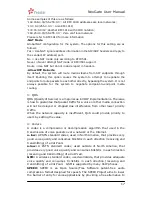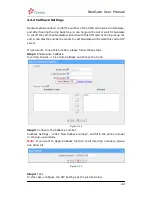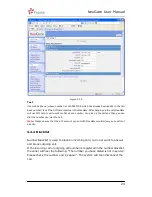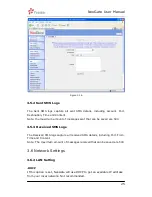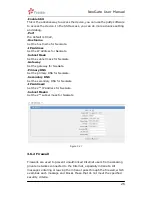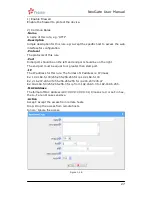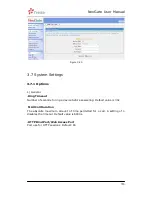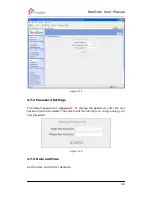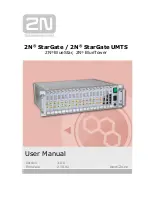
NeoGate User Manual
www.yeastar.com
17
Some examples of this are as follows:
'192.168.0.0/255.255.0.0' : All RFC 1918 addresses are local networks;
'10.0.0.0/255.0.0.0' : Also RFC1918;
'172.16.0.0/12':Another RFC1918 with CIDR notation;
'169.254.0.0/255.255.0.0' : Zero conf local network.
Please refer to RFC1918 for more information.
·
NAT Mode
Global NAT configuration for the system. The options for this setting are as
follows:
Yes = Use NAT. Ignore address information in the SIP/SDP headers and reply to
the sender's IP address/port.
No = Use NAT mode only according to RFC3581.
Never = Never attempt NAT mode or RFC3581 support.
Route = Use NAT but do not include report in headers.
·
Allow RTP Reinvite
By default, the system will route media steams from SIP endpoints through
itself. Enabling this option causes the system to attempt to negotiate the
endpoints to route packets to each other directly, bypassing the system. It is not
always possible for the system to negotiate endpoint-to-endpoint media
routing.
3
)
QOS
QOS (Quality of Service) is a major issue in VOIP implementations. The issue
is how to guarantee that packet traffic for a voice or other media connection
will not be delayed or dropped due interference from other lower priority
traffic.
When the network capacity is insufficient, QoS could provide priority to
users by setting the value.
4
)
Codecs
A codec is a compression or decompression algorithm that used in the
transmission of voice packets over a network or the Internet.
u-law:
A PSTN standard codec, used in North America, that provides very
good voice quality and consumes 64kbit/s in each direction (receiving and
transmitting) of a VoIP call.
a-law:
A PSTN standard codec, used outside of North America, that
provides very good voice quality and consumes 64kbit/s in each direction
(receiving and transmitting) of a VoIP call.
GSM:
A wireless standard codec, used worldwide, that provides adequate
voice quality and consumes 13.3kbit/s in each direction (receiving and
transmitting) of a VoIP call. GSM is supported by many VoIP phones.
SPEEX:
SPEEX is an Open Source/Free Software patent-free audio
compression format designed for speech. The SPEEX Project aims to lower
the barrier of entry for voice applications by providing a free alternative to
Содержание TG200
Страница 1: ...TG200 User Manual Version 5 11 0 05 Yeastar Technology Co Ltd...
Страница 5: ...NeoGate User Manual www yeastar com 5 2 Front Side Figure 1 1 NeoGate Front Panel Picture...
Страница 36: ...NeoGate User Manual www yeastar com 36 Figure 3 31...
Страница 37: ...NeoGate User Manual www yeastar com 37 4 Application Application 1 Figure 4 1 Application 2 Figure 4 2 Finish...















